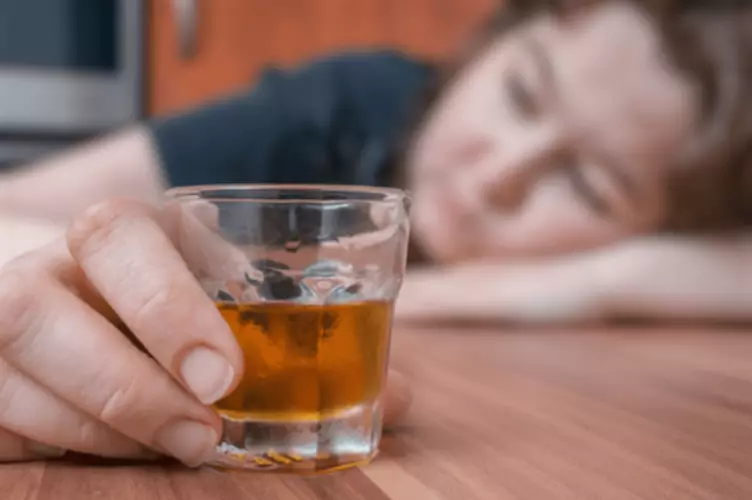Content
Only a professional can diagnose a substance use disorder and prescribe medication that may encourage long-term healing. Consulting with your primary care physician or a mental health professional is a good place to start when you decide to get help. Professional help can provide the structure and experienced guidance that can make a difference on the path to recovery. Track marks are the scars that appear along the veins of someone who injects frequently and repeatedly uses the same injection sites.

The immune system causes swelling to develop, and pus is created from the combination of white blood cells, germs and damaged tissues. Health care practitioners also use other methods (such as questionnaires) to identify abuse of some drugs and other substances and to determine the extent of drug use and its effects. Urine and sometimes blood tests may be done to check for the presence of drugs. Sometimes injection drug use is diagnosed when people go to a health care practitioner because they want help stopping use of the drug. This is therefore a variant of the common method of injection with a dropper with the hypodermic needle affixed, using a “collar” made of paper or other material to create a seal between the needle and dropper.
Sepsis Alliance Symposium: Precision Sepsis Care
Once identified, study staff would recruit individuals for a semi-structured interview for either the opioid or amphetamine study, depending on their drug of choice. After each interview, the study staff immediately created a memo describing their observations and experiences [20]. All protocols were approved by the iv drug use institutional review board at New York University. Some long-term intravenous drug users will get a swollen hand after shooting up. It is usually the result of a skin infection and can range in severity. Drugs can be used in several different ways, but one popular route of administration is through the veins.

Radiographic findings in acute osteomyelitis include periosteal reaction (Fig. 9), regional osteopenia, cortical erosion, endosteal scalloping and overlying soft tissue swelling or deformity [17, 18]. Plain radiographs are, however, relatively insensitive in early bone and joint infections as bone destruction of up to 30% may be needed for radiographic identification and visible erosions in osteomyelitis can take up to 3 weeks to develop [17, 18]. CT findings are similar to those on plain radiographs and include soft tissue swelling, regional osteopenia and cortical erosions. While CT provides greater sensitivity than plain radiographs and is the imaging modality of choice for assessment of osseous erosions, it cannot reliably identify bone oedema early in the disease process [17, 18]. The magnetic resonance imaging (MRI) sequences employed in suspected soft tissue infection will typically include T2, a fluid-sensitive sequence such as short-tau inversion recovery (STIR) and unenhanced and post-contrast T1. Diffusion-weighted imaging (DWI) may be added in certain cases, such as to assess for abscess formation.
Substance Use Treatment
Fat-saturated T2 or enhanced T1 sequences can be used to improve the delineation of inflammation. A gradient echo sequence may be added in more severe cases with suspected haemorrhage or necrotising fasciitis. In cellulitis, high T2 and STIR signal intensity with corresponding T1 signal intensity of the subcutaneous tissues with overlying skin thickening is seen, and there is enhancement following gadolinium administration [8]. Plain radiographs may show indirect signs of cellulitis such as soft tissue swelling and loss of fascial planes https://ecosoberhouse.com/article/tips-to-get-started-on-the-road-to-recovery/ and can identify radio-opaque retained foreign bodies. Ultrasound is also a useful initial investigation in PWID presenting with soft tissue infection to evaluate for the presence of a subcutaneous abscess or non-radio-opaque foreign body, as well as guiding potential abscess aspiration or therapeutic drainage [8]. Ultrasound features of cellulitis include diffuse thickening and increased echogenicity of subcutaneous tissues and a characteristic “cobblestone” appearance of the subcutaneous fat due to soft tissue oedema [8, 9].
What is the most common IV drug?
The most commonly injected drug is heroin, but amphetamines, buprenorphine, benzodiazepines, barbiturates, cocaine, and methamphetamine also are injected.
HEPATITIS C (formerly known as “non-A, non-B“ hepatitis and also referred to as “HCV“) is spread through blood- to-blood contact and is very infectious, which means you can acquire it quite easily if exposed to it. There are oral and blood tests available that detect whether or not you have antibodies to the hepatitis C virus in your blood, which, if positive, should be confirmed with a second test. The only way to test whether or not you have the actual virus in your blood is by getting a confirmatory test which shows whether you have a current infection or not. There is as yet no vaccine for hepatitis C, and antibodies are not protective—that is, they don’t make you immune to re-infection as with HBV.
Harm Reduction Methods for Intravenous Drug Use
As a result, participants described the staff, including medical and nonmedical workers, as non-judgmental, understanding, and accommodating, which made them feel more comfortable accessing and continuing care in the SSP setting. In particular, participants reported using the SSP where interviews were taking place for HCV and HIV testing and treatment. Beyond just needle exchange programs, the other major harm reduction strategy for drug users are safe injecting facilities (SIFs). These provide a sterile environment for people who inject drugs to do so cleanly, and with sterile syringes which are forced to be thrown away after use so that no re-use occurs. The first of these facilities opened in Switzerland, but there are now over 100 globally including one in Vancouver – Canada, Sydney – Australia, and most recently, Melbourne – Australia. An additional and often under-recognised soft tissue complication in active intravenous drug users is retained needles.
- A healed collapsed vein can function normally, with blood flowing through the vein once again.
- Patient demographics, comorbidities, 90-day readmissions, and substance use disorder clinic follow-up were compared between PWID with PDD on oral antibiotics and those who completed intravenous (IV) antibiotics using an as-treated approach.
- Nearly all of the IVDUs (90%) reported a lifetime history of some degree of physical, psychological, or social difficulty related to drug abuse, but only 35% had ever received treatment for drug abuse.
- If you have any questions, or would like to learn more about or treatment centers, please fill out the form below and one of our representatives will contact you shortly.
- Given that PWID represents a group with increased morbidity and mortality from many causes [2,3,4,5], it is imperative to understand PWIDs’ attitudes and histories with respect to medical care provision and harm reduction.
Practitioners may suspect problems with drug use when they notice changes in mood or behavior in a person. For example, repeatedly injecting drugs intravenously produces track marks. Track marks are lines of tiny, dark dots (needle punctures) surrounded by an area of darkened or discolored skin. People who inject drugs may claim other reasons for the marks, such as frequent blood donations, bug bites, or other injuries.
Other physical health issues
Moreover, PWID in NYC that do not use SSPs may have different experiences than the ones we report here. Lastly, we did not collect data on smoking and/or tobacco use, which is also a stigmatized behavior in healthcare settings [15], and may have provided another mechanism for stigma among our sample. Heroin, cocaine, methamphetamines, prescription stimulants, and prescription opioids can be injected into the bloodstream through a vein.
- In addition to HIV and sexually transmitted diseases, there is also a chance that IV drug use spreads other diseases as well.
- We believe in treating each person on a physical, emotional and social level to help them make positive lifelong changes.
- Although more pleasurable for the indivdual, IV drug use can also be dangerous and lead to serious complications.
- When patients need weeks or months of IV antibiotic treatment, but otherwise don’t need to be hospitalized, the standard protocol is to discharge them with a PICC line, and allow them to finish the medication at home.
The skin is pierced with the needle to allow the drugs to enter the body. This can be done intravenously, but it can also be done with intramuscular or subcutaneous injections. Informal needle exchange programs in the United States began as early as the 1970s.
Programs that distribute injectable naloxone to individuals for use in suspected overdose situations have been implemented in many larger US cities. Another sign to look for is a change in appetite, which often goes along with a change in sleep patterns. Drugs can cause major changes in eating, drinking and sleeping patterns.
- Familiarity with the manifestations of drug use is therefore critically important for both physicians and radiologists, particularly in the emergency department setting and in the case of unusual presentations in young adults.
- Plain radiographs are, however, relatively insensitive in early bone and joint infections as bone destruction of up to 30% may be needed for radiographic identification and visible erosions in osteomyelitis can take up to 3 weeks to develop [17, 18].
- Bone oedema of the adjacent vertebral body endplates also appears as high T2/STIR signal and low T1 signal.
- Unless you have given yourself an injection before, you may have no idea what an injection site looks like.
In these cases, PWID may not be able to access medical care in comfortable, non-stigmatizing environments, which may contribute to internalized drug use stigma and poorer health outcomes [24, 28]. PWID in our study highlighted a variety of pronounced and influential experiences with drug use stigma in the broader healthcare environment. We speculate that the SSP environment may improve PWIDs self-worth and sense of belonging, providing them with the resources they need to express their circumstances and identity.
Citation, DOI, disclosures and article data
Anyone who uses drugs intravenously also has an increased risk of developing other conditions and diseases. They may cause issues with remembering simple things, such as when to pick a child up from school or when to go to the grocery store. Long-term memory problems can result in forgetting the names of close friends. Engaging in IV drug use results in an increased risk of developing other conditions later. It’s common for people to be more willing to take risks while in the middle of a drug binge. HIV diagnosis are more common among this population due to this, and dirty needles.
Back to the Future to Combat Today’s “Super Bugs” – Contagionlive.com
Back to the Future to Combat Today’s “Super Bugs”.
Posted: Tue, 30 May 2023 11:10:14 GMT [source]
We conducted a prospective multicenter bundled quality improvement project of PWID with SIRI at 3 hospitals in Missouri. All PWID with SIRI were offered multidisciplinary care while inpatient, including the option of addiction medicine consultation and medications for opioid use disorder (MOUD). All patients were offered oral antibiotics in the event of a PDD either at discharge or immediately after discharge through an infectious diseases telemedicine clinic. Additional support services included health coaches, a therapist, a case manager, free clinic follow-up, and medications in an outpatient bridge program. Patient demographics, comorbidities, 90-day readmissions, and substance use disorder clinic follow-up were compared between PWID with PDD on oral antibiotics and those who completed intravenous (IV) antibiotics using an as-treated approach. Cellulitis, an acute infection of the dermis and subcutaneous tissues, is a clinical diagnosis when uncomplicated and is treated with antibiotics and supportive measures [8].